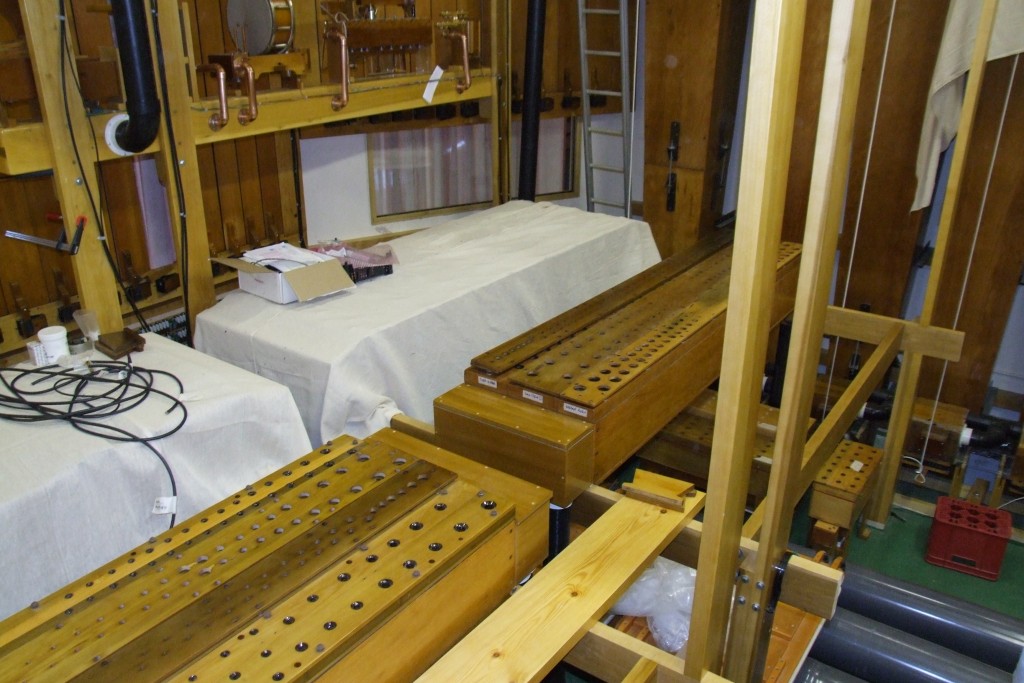
Apart from the functional units (windchests, trunking, regulators etc.), there are constructional components that support these units and form the basis of the complete instrument. Theatre organs consumed prodigious amounts of timber, much of the highest quality. It is unusual to see timber with any significant knots or other defects, even in the thickest or longest sections.
Most structural framing would be in softwood (pine, poplar or douglas fir) with detail components and stressed items in harder materials such as maple or, occasionally, mahogany or oak. Poplar, although not always used for load-bearing work, was widely used for items such as rack boards and some larger pipework.
Organ builders also used composite materials; Comptons used batten-board (a kind of high quality blockboard) for larger wind trunks and reservoirs, and Compton’s used pine-faced plywood for rack boards. Wurlitzers (especially) made many parts including console structures out of glued-up panels and boards; films of the Wurlitzer factory show some of the large equipment used for making up and finishing these assemblies. In practice, such composite materials often offered a more durable structure at less cost, compared to solid timber components made from expensively seasoned boards which could still be subject to splits and warping due to temperature and humidity changes.
See further:
